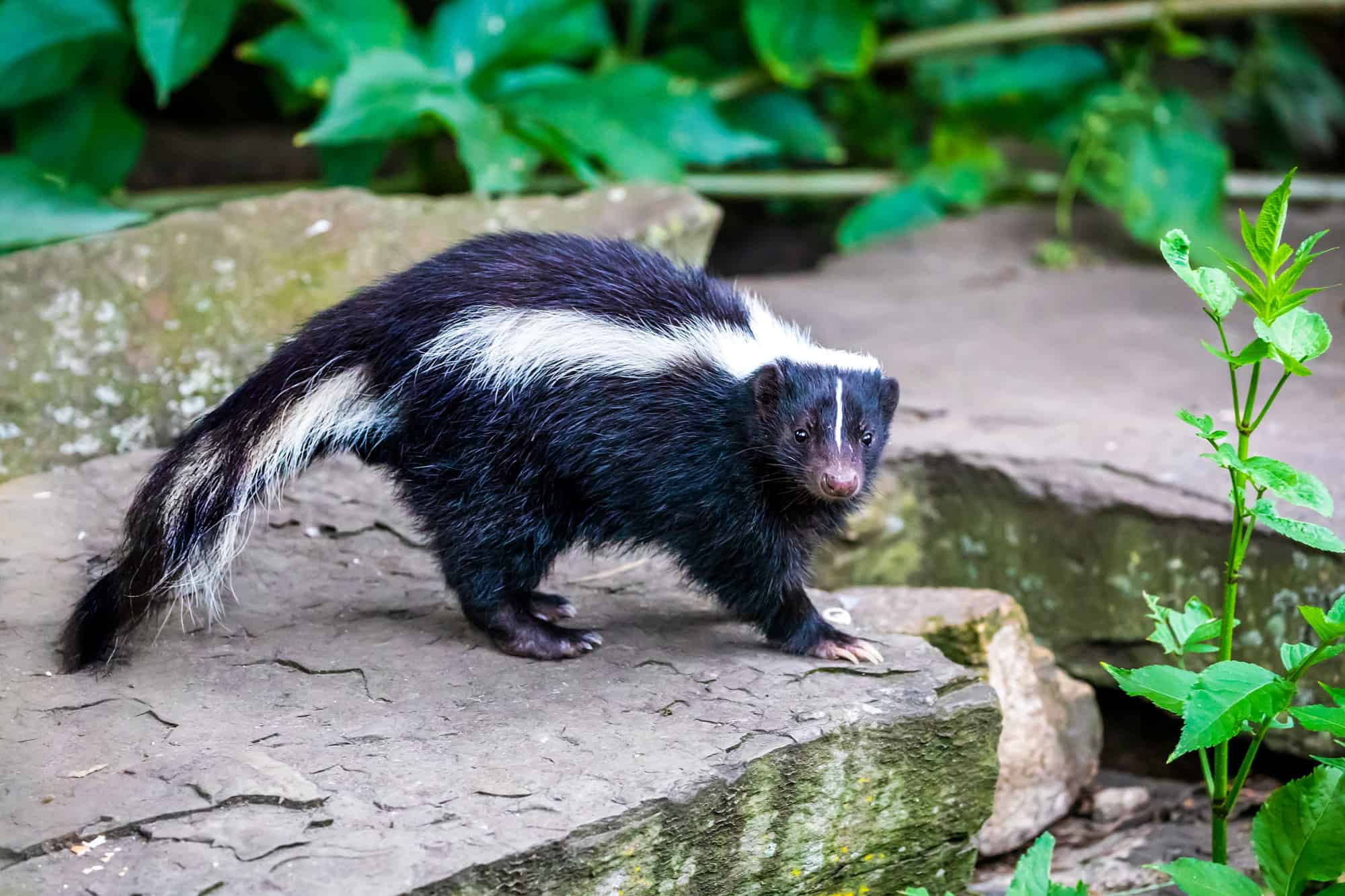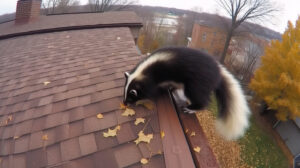Skunks have the ability to spray a uniquely foul odor. While other mammals may release an unpleasant smell when threatened, none are as targeted or powerful as the skunk. It’s a somewhat rare trait among medium-sized mammals, but why exactly do skunks release such a bad scent?
Why Do Skunks Spray Such a Bad Smell?
Skunks have a reputation for spraying a foul odor that can be very difficult to get rid of, but they aren’t the only creator to secrete a bad-smelling substance. According to ABC Humane Wildlife, most mammals have anal glands that can secrete a strong, oily substance. For example, wolves use theirs to mark their territory.
However, only skunks have evolved to use their scent glands as a defense mechanism. Skunks spray as a last resort to ward off potential predators.
According to the Iowa Department of Natural Resources, a skunk’s spray is comprised of sulfur-rich thiols and thioacetates, which gives the spray its unpleasant scent. As anyone who has experienced a skunk attack will know, the smell is also notoriously hard to get rid of.
Skunks even have the ability to adjust the consistency and direction of their spray. For example, a skunk may shoot a stream directly into the face of a nearby predator. However, if a skunk is unsure of the location of the threat, it may choose to let loose a fine mist of the oily liquid.

A skunk’s spray is rich in sulfur.
©iStock.com/Edwin_Butter
Skunks Spray as a Last Resort
Skunks generally only spray their enemies as a last resort. Their black and white fur serves as a warning, and they will typically first employ an intimidating foot-stamping display before lifting their tails.
Additionally, it takes a while for skunks to replenish the foul-smelling fluid, and they are left vulnerable in the meantime. Research also suggests that even skunks aren’t a fan of the odor they emit, as adults typically only spray each other when males fight during mating season.
How to Get Rid of Skunk Smell
Getting sprayed by a skunk is a pretty rough experience, whether it happens to you or your pet. Luckily there are some steps you can take to help minimize the damage and get rid of the skunk smell.
First, it’s worth noting that getting sprayed by a skunk can cause some unpleasant symptoms. Examples include nausea, vomiting, or redness and stinging in the eyes.
In some cases, you (or your pet) may need medical treatment if sprayed, especially in the eyes or mouth. You should definitely see a doctor immediately if scratched or bitten by a skunk, as these creatures are capable of carrying rabies.
As for the odor Healthline recommends an immediate shower with deodorant soap and a shampoo made for oily hair. You can also pour 2-4 cups of baking soda into a hot bath and soak for 15-20 minutes.
For pets, Healthline recommends creating a mixture of hydrogen peroxide or white vinegar, baby shampoo or grease-cutting dish detergent, and baking soda.
Rub this mixture into your pet’s fur and let it sit for five minutes, then rinse and rewash the fur with regular pet shampoo. Be careful not to get the mixture into your pet’s eyes. There are also products you can buy from the store to help get rid of the smell.
Defense Mechanisms in Other Mammals
At one point scientists believed that skunks were a part of the weasel family, but these black and white creatures actually belong to their own family known as Mephitidae. Few mammals use extremely stinky smells in the way that skunks do. Here we will look at a few other preferred methods of defense commonly seen in medium-sized mammals.

Mammals such as badgers, foxes, and raccoons may vocalize by hissing or growling as a defense mechanism.
©iStock.com/Maciej Jaroszewski
Vocalizing
When threatened, some medium-sized mammals make defensive noises to ward off predators. For example, a cornered raccoon may growl and show its teeth as a warning not to come near. Foxes and badgers may also hiss or growl when they feel threatened.
Playing Dead
One of the most simple defense mechanisms employed by certain medium-sized rodents involves playing dead. Opossums are particularly skilled at this.
According to the Opossum Society of the United States, these creatures are capable of entering a comatose-like state. This causes predators, who are typically stimulated by the kill, to lose interest and leave the opossum alone.
Spines and Quills
Some animals have a defense mechanism built right into their body. Hedgehogs, for example, are equipped with spines down their back. When threatened, these creatures sometimes roll into a tight ball with their spines facing out, while protecting their vulnerable face, feet, and belly.
Porcupines take things a step further. They may embed their quills in an enemy’s skin with a swing of their tail. These quills are barbed, making them difficult to remove from the skin. Porcupines typically first arch their back and raise the spines on their tail as a warning when threatened.
The photo featured at the top of this post is © Geoffrey Kuchera/Shutterstock.com
Thank you for reading! Have some feedback for us? Contact the AZ Animals editorial team.





